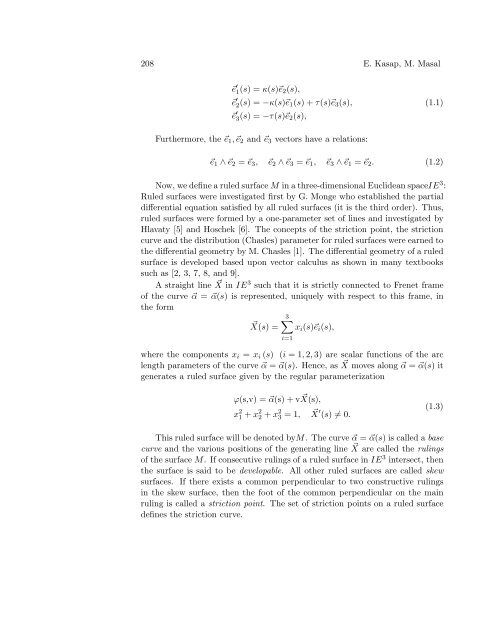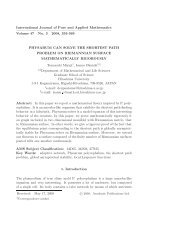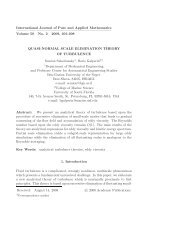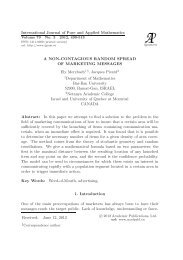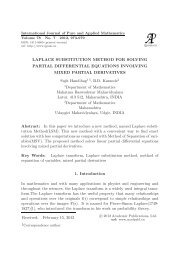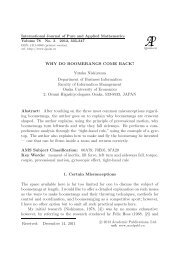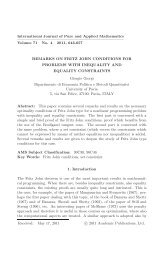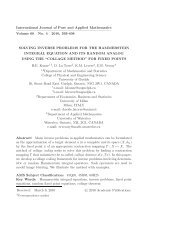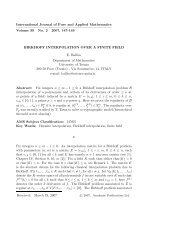RULED SURFACES WITH CONSTANT PARAMETER OF ...
RULED SURFACES WITH CONSTANT PARAMETER OF ...
RULED SURFACES WITH CONSTANT PARAMETER OF ...
Create successful ePaper yourself
Turn your PDF publications into a flip-book with our unique Google optimized e-Paper software.
208 E. Kasap, M. Masal<br />
e ′ 1(s) = κ(s)e2(s),<br />
e ′ 2(s) = −κ(s)e1(s) + τ(s)e3(s),<br />
e ′ 3(s) = −τ(s)e2(s),<br />
Furthermore, the e1,e2 and e3 vectors have a relations:<br />
(1.1)<br />
e1 ∧ e2 = e3, e2 ∧ e3 = e1, e3 ∧ e1 = e2. (1.2)<br />
Now, we define a ruled surface M in a three-dimensional Euclidean spaceIE3 :<br />
Ruled surfaces were investigated first by G. Monge who established the partial<br />
differential equation satisfied by all ruled surfaces (it is the third order). Thus,<br />
ruled surfaces were formed by a one-parameter set of lines and investigated by<br />
Hlavaty [5] and Hoschek [6]. The concepts of the striction point, the striction<br />
curve and the distribution (Chasles) parameter for ruled surfaces were earned to<br />
the differential geometry by M. Chasles [1]. The differential geometry of a ruled<br />
surface is developed based upon vector calculus as shown in many textbooks<br />
such as [2, 3, 7, 8, and 9].<br />
A straight line X in IE3 such that it is strictly connected to Frenet frame<br />
of the curve α = α(s) is represented, uniquely with respect to this frame, in<br />
the form<br />
3<br />
X(s) = xi(s)ei(s),<br />
i=1<br />
where the components xi = xi (s) (i = 1,2,3) are scalar functions of the arc<br />
length parameters of the curve α = α(s). Hence, as X moves along α = α(s) it<br />
generates a ruled surface given by the regular parameterization<br />
ϕ(s,v) = α(s) + v X(s),<br />
x 2 1 + x 2 2 + x 2 3 = 1, X ′ (s) = 0.<br />
(1.3)<br />
This ruled surface will be denoted byM. The curve α = α(s) is called a base<br />
curve and the various positions of the generating line X are called the rulings<br />
of the surface M. If consecutive rulings of a ruled surface in IE 3 intersect, then<br />
the surface is said to be developable. All other ruled surfaces are called skew<br />
surfaces. If there exists a common perpendicular to two constructive rulings<br />
in the skew surface, then the foot of the common perpendicular on the main<br />
ruling is called a striction point. The set of striction points on a ruled surface<br />
defines the striction curve.


